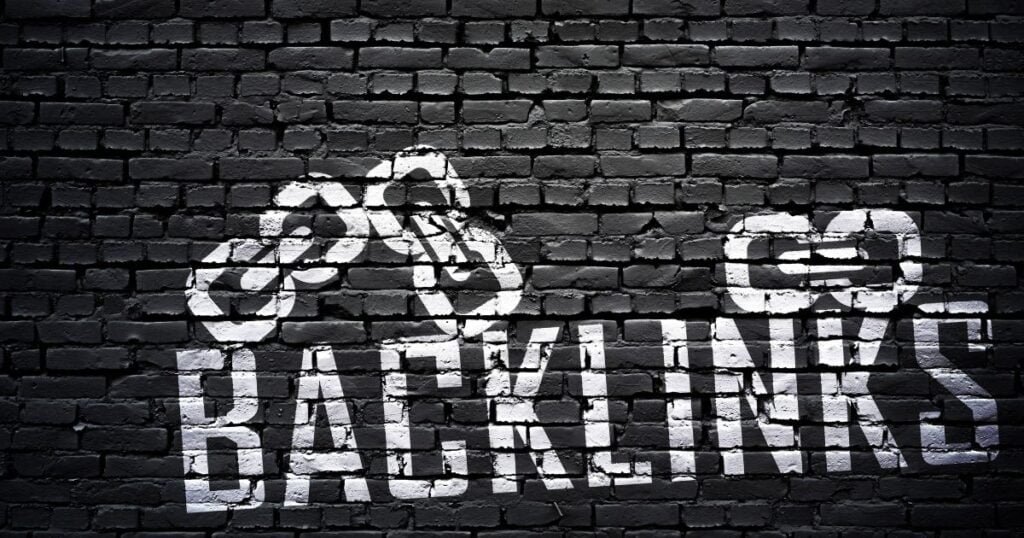Are you prepared to discover the key to exploding your internet presence? Let us introduce backlinks, the hidden hero of digital marketing! In the realm of SEO, they are akin to VIP passes; they lend legitimacy to your website. We’re delving deeply into the science and art of backlinks in digital marketing today. Get ready for a trip where every link brings you one step closer to digital greatness, from improving your search engine rankings to establishing yourself as an expert online. Prepare yourself because SEOJust is about to transform how you think about backlinks and improve your online presence!
Backlink in Digital Marketing | An Overview

Backlinks are essential to search engine optimization (SEO) and are one of the most important ranking factors that search engines use to evaluate the authority and relevancy of a website. An inbound link, often known as a backlink, is any connection that originates on another website and points to a page on your own. The quantity and quality of backlinks leading to a website are indicators of the website’s importance and dependability that search engines use.
A backlink is a recommendation for your website. Backlinks indicate from other websites that your content is valuable and significant enough to get a link. The more respectable websites that link to your website with high-quality backlinks, the higher search engines, such as Google, will rank your website.
The rationale for this is that backlinks function as endorsements in Google’s algorithm, essentially saying, “This site has good content that’s worth linking to.”
Obtaining backlinks ought to be a fundamental component of any successful SEO plan. Your website will rank for valuable keywords associated with your brand, goods, or services more quickly the more high-quality backlinks it receives. It’s crucial to target relevant websites while developing your backlink profile and to concentrate on constructing natural links rather than ones obtained through trickery or deception. We’ll review particular link-building strategies and recommended practices in the following parts.
Backlink Basics
A backlink is a hyperlink that leads from one website or page to another. Backlinks are sometimes called inbound, incoming, or links pointing to your site.
Backlinks serve several important purposes:
- They drive referral traffic to your website from other sites. When a site links to you, visitors may follow that link to view your content.
- They help build authority and relevance. Search engines view your site as a trusted information source if credible and high-quality sites link to you.
- They can improve SEO and search rankings. Getting backlinks to a page can signal to Google and other search engines that the page offers valuable content on a topic.
There are two main types of backlinks:
Internal backlinks point from one page on a website to another page on the same site. For example, your About Us page would link to your site’s Home page. Internal links help visitors navigate your site.
External backlinks come from outside domains pointing back to pages on your website. An external link from another site brings referral traffic and signals external endorsement. Getting high-quality external backlinks is a key SEO strategy.
While internal backlinks mainly help with on-site navigation and user experience, external backlinks are more important for off-site SEO. Search engines analyze external backlinks’ number, quality, and relevance to estimate a site’s authority and determine search rankings.
The more quality backlinks you have from authoritative, topically relevant sites, the better your pages may rank in search engines like Google. A proper backlink-building strategy is crucial for good SEO.
Also Read: Top 5 Best SEO Companies for Lawyers – Feb Ranking 2024
Backlink Types

There are two main types of backlinks – natural and manual.
Natural Backlinks
Natural backlinks are earned organically when other sites link to your content. They happen naturally when you produce high-quality content that resonates with readers and publishers. The best natural backlinks come from authoritative sites linking to your content because it provides value for their audience.
You can earn natural backlinks through:
- Creating share-worthy, useful content like guides, research studies, and data-driven articles. Useful content gets linked to industry sites.
- Optimizing content for search rankings and featured snippet opportunities. Ranking content has a better chance of getting linked to.
- Engaging social media followers and networking with industry peers. Your content is more likely to get social shares and mentions.
- Getting interviewed as an expert contributor for high domain authority sites. Expert quotes and guest articles get linked within articles.
- Publishing on niche directories, aggregators or platforms. Links from topic-relevant sites are especially valuable.
The key is creating content optimized for organic discovery and sharing, not just to acquire backlinks. Focus on value for readers first.
Manual or Outreach Backlinks
Manual backlinks are obtained through direct outreach and other active link-building efforts. This involves proactively contacting site owners and bloggers to request backlinks.
Examples of manual link-building strategies include:
- Influencer marketing to get backlinks from authority figures and industry leaders. Look for relevant influencers and send personalized pitches.
- Guest posting by contributing articles to blogs and websites. Focus on high-quality sites closely aligned with your niche.
- Giveaways and link inserts negotiated with relevant sites. Sponsor contests or submit infographics to get backlinks.
- Business partnerships that include cross-promotions or co-marketing content collaborations. Strategic partnerships can yield high-quality backlinks.
- Paid placements such as sponsored articles and links. Use caution to avoid low-quality paid links.
The key to manual outreach is relevance and diversity. Avoid over-optimization and focus on forming relationships with sites that align with your brand and content.
Backlinks for Ranking
Backlinks are critical in influencing search engine rankings and overall website visibility. The quantity and quality of backlinks directed towards a website are among the most important factors search engines like Google use to assess relevance and authority. Sites with more backlinks from other authoritative sites rank higher in search results pages.
Backlinks serve as votes of confidence. When an external website links back to your content, it indicates that the site finds your content valuable and relevant. The more quality backlinks you earn, especially from reputable sources, the more Google considers your content authoritative on a given topic.
Google has confirmed that backlinks remain one of the strongest signals in its search ranking algorithm. While the exact weight placed on backlinks versus other signals is not publicly known, Google has clarified that earning backlinks from trustworthy sources remains a primary way to increase rankings organically. The reason backlinks are so influential is they require external validation – someone besides you found your content compelling enough to link to. This makes quality backlinks difficult to manipulate.
In summary, backlinks are not merely a metric to keep track of but can directly influence a website’s visibility and traffic. A strong backlink profile signals to search engines that a site provides value. When developing an SEO strategy, backlink building should be a top priority.
Also Read: Revolutionizing SEO: Harnessing the Power of SEO AI Software With SEOJust
Quality Backlink Building

Building quality backlinks takes time and effort but is essential to any successful SEO strategy. Here are some best practices to keep in mind:
Create Valuable, Engaging Content
The best way to earn quality backlinks is to publish content people want to read and share. Make sure your content provides value to your audience by:
- Offering in-depth, comprehensive information on topics your target audience cares about
- Creating unique research, data, interviews, case studies, etc.
- Optimizing content for on-page SEO with keyword research and optimization
- Promoting your content effectively through social media, email, etc.
Build Relationships with Influencers
Contacting industry leaders and influencers can help land backlinks on authoritative sites. But this only works if you:
- Research relevant sites and influencers in your space
- Provide personalized pitches explaining why a link would benefit their audience
- Offer guest posts, expert interviews or quotes, co-created content, etc. as value
- Follow up professionally and politely if they don’t respond right away
Look for Link-Worthy Opportunities
Keep an eye out for opportunities to earn quality backlinks by:
- Getting involved in industry forums and communities
- Sponsoring, speaking at or attending relevant conferences and events
- Reaching out when your brand is mentioned online
- Repurposing popular content for new audiences
Finding sites, mentions, and opportunities closely aligned with your brand is key. Random, irrelevant backlinks won’t help.
Diversify Link Sources
A diverse backlink portfolio from various domains looks natural and makes your site appear more authoritative. Vary your link sources by:
- Guest posting on different industry blogs
- Getting coverage in online publications
- Participating actively in forums and communities
- Building relationships with different influencers
Avoid relying too heavily on just one or two link sources. Spread out your efforts for the best results.
Also Read: A Comprehensive Guide to Marketing Consulting SEO Strategies
Backlink Analysis
Understanding your website’s backlink profile is crucial for monitoring SEO progress. Backlink analysis provides insight into the quantity, quality, and sources of the external links pointing to your site.
Backlink Metrics
Key backlink metrics to analyze regularly include:
- Total backlinks – The number of external links to your site. Higher is usually better.
- Referring domains – The number of unique domains linking to you. Diverse sources are ideal.
- Domain authority – The authority of sites linking to you. Higher authority sites pass more SEO value.
- Anchor text – The words used in your backlink anchor text. Optimizing anchor text helps rankings.
Monitoring your most impactful referring domains and new links helps identify SEO growth opportunities. Prioritizing links from reputable, high-authority sites in your niche is ideal for sustainable SEO gains.
Backlink Analysis Tools
Specialized SEO tools provide the best option for continuously monitoring your backlink profile and new link-building opportunities. Top backlink analysis tools include:
- Ahrefs – Provides a full backlink audit showing quantity, quality, and sources of backlinks. It also finds new link-building prospects.
- Moz – Tracks total links, referring domains, and metrics like domain authority for each link. Useful for indexation checks.
- SEMrush – Features backlink analytics and audits to identify toxic links and opportunities. Competitive link analysis is also possible.
Leveraging backlink analysis tools provides the visibility needed to build an effective external link profile that drives search visibility and traffic. Monitoring new links, anchor text data, and referring domains gives key insights for improving SEO rankings and performance.
Risks and Challenges

It is important to know the potential risks and challenges of building backlinks. Executing a backlink strategy requires a prudent, responsible approach.
Avoiding Spammy Backlinks
One must avoid obtaining links from low-quality, spammy websites or sources. Google and other search engines can penalize your site for link-building tactics they deem manipulative or “black hat.” Stick to reputable, relevant sites for backlinks. Don’t buy links or post comments with links solely to manipulate rankings. Focus on organic editorial links instead.
Dealing with Negative SEO
Negative SEO is when competitors or detractors intentionally build bad backlinks to your site to trigger a ranking decrease. Use disavow tools to identify and counteract any toxic backlinks. Routinely monitor your backlink profile to catch negative SEO efforts quickly.
Adapting to Algorithm Changes
Google’s algorithms change frequently, impacting how links are evaluated and weighted for rankings. Stay updated on Google’s algorithm updates. Adjust your link-building and content strategy based on the latest rules and best practices. Don’t overly rely on techniques that worked previously if Google downgrades their importance for rankings.
With awareness and prudence, these risks can be managed. Focus on high-quality content and natural links from reputable sites. Monitor backlinks routinely. Adapt promptly to algorithm changes. Executed ethically, backlinks remain a worthwhile SEO investment.
Link Building Strategy
Developing an effective, ethical link-building plan is crucial for long-term SEO success. When creating your strategy, focus on building high-quality links that provide value to users rather than simply chasing backlinks.
Begin by conducting competitor research to identify link-building opportunities in your industry. Examine where your competitors are getting links from to uncover prospects.
Focus on earning links from authority sites through valuable content contributions. Produce high-quality, relevant content like guest posts on industry blogs, contribute expert insight to reputable publications, or create resources to share with websites. Ensure content provides unique value for publishers and readers.
Build relationships with influencers and brands to collaborate on co-marketing campaigns, product reviews, influencer shoutouts or giveaways. Secure backlinks as part of any promotional partnerships.
Leverage your website and social media channels to generate links through resources, networking outreach, competitions, etc. Interlink relevant pages and content across your domains.
Diversify your link sources across multiple platforms like directories, forums, podcasts, etc. The more variety, the better.
Monitor your link-building efforts and backlink profile regularly. Analyze which tactics are yielding the best results and scale up those strategies. Continuously refine based on data.
An ethical, diverse link-building strategy focused on value provides the quality backlinks search engines want to see, resulting in long-term SEO gains.
Measuring Backlink Success

Measuring the success and impact of your backlink-building efforts is crucial for understanding their effectiveness and value to your SEO strategy. Here are some tips for tracking and evaluating your backlink successes:
Track Backlink Growth Over Time
- Use backlink analysis tools to monitor the number of backlinks your site has gained monthly or quarterly. Look for steady, natural growth from a diverse range of quality sites. Sudden spikes may indicate an artificial link-building tactic.
- Segment new links by type – editorial, mentions, directories, etc. – to see where your efforts are gaining traction. Focus on expanding natural links.
- Compare your backlink growth to that of competitors. Outpacing them in quality links can help you overtake their rankings.
Gauge Impact on Rankings
- Look for correlations between new backlinks and increases in keyword rankings for targeted terms. Link links take time to impact SERPs, so track over several months.
- Review rankings in Google Search Console to identify pages and keywords benefiting from new links. Traffic should steadily improve from organic search.
- Use rank-tracking software to identify positive ranking trends and pinpoint pages getting visibility boosts from links.
Monitor Website Traffic
- Backlinks can increase referral traffic from associated external sites. Use analytics to identify new traffic sources.
- Visitors from backlinked domains tend to have higher time-on-site and lower bounce rates. Watch for engagement lift.
- Following new quality links, traffic surges are a good sign of their positive SEO impact.
Qualitative Link Evaluation
- Manually review new high-value links from influencers and authoritative publications. Context matters – analyze anchor text, link type, content, etc.
- Assess if important industry players are referencing you more frequently. Substantial, brand-focused links are ideal.
- Bookmark and showcase your best links as examples of link-building success. These links move the needle for SEO and branding.
By diligently tracking backlink acquisition, search performance, and site traffic over time, you can measure the ROI of backlink building and refine your outreach strategy. Quality over quantity should be the goal.
What are backlinks in digital marketing?
Backlinks are incoming links from one website to another, acting as endorsements. They are crucial in establishing a website’s authority and credibility in the eyes of search engines.
How do backlinks impact SEO rankings?
Backlinks play a pivotal role in SEO by enhancing a website’s authority. Search engines view quality backlinks as a vote of confidence, leading to improved rankings and visibility in search results.
What are the best practices for building quality backlinks?
Focus on creating high-quality, relevant content that naturally attracts links. Engage in ethical outreach practices, collaborate with influencers, and diversify your link-building strategies for optimal results.
Which tools are useful for analyzing backlink profiles?
Ahrefs, Moz, and SEMrush are popular tools for analyzing backlink profiles. They provide insights into the quality, quantity, and diversity of backlinks, helping to assess and refine your link-building strategies.
How can I avoid negative SEO risks associated with backlinks?
Stay vigilant against spammy and low-quality backlinks, regularly audit your backlink profile, and disavow toxic links. Adhering to ethical link-building practices and adapting to search engine guidelines is essential for mitigating negative SEO risks.
Conclusion
Ready to amplify your online influence? SEOJust is your go-to partner for unleashing the true power of backlinks. Let’s craft a backlink strategy that propels your website to new heights! Click now to transform your digital presence and outrank the competition. Elevate your SEO game with SEOJust – where innovation meets results!



